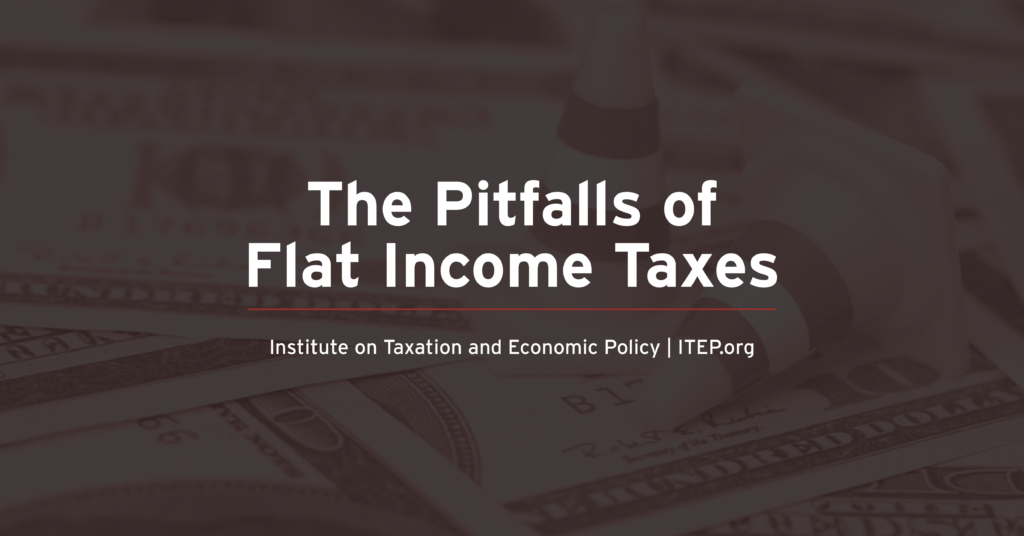This op-ed appeared in the February 26, 2023 edition of the Plain Dealer and on Cleveland.com.
Ohio House Republicans, including Speaker Jason Stephens, are making a big push for a flat state income tax. As the debate unfolds in Columbus, lawmakers and families across Ohio should be asking: Who benefits the most from a flat tax? Here’s a hint: it’s not most regular working families.
A flat tax is one where each taxpayer pays the same percentage of their income whereas a graduated tax applies higher rates to higher incomes. Flat taxes have some surface appeal but come with significant downsides and fail to deliver on many of the promises their proponents make.
The flat tax plan would deliver a windfall to the wealthy
Flattening Ohio’s income tax would lead to an average tax cut of $11,166 for the wealthiest 1 percent of the state’s earners (those earning more than $617,000 a year) while delivering an average tax cut of $0 to the poorest 20 percent, according to our microsimulation tax model. Those in the middle 20 percent would receive an average tax cut of $24, less than what it would cost to buy a family of four hotdogs at a Cavs game.
Overall, the plan would deliver 89 percent of its benefit to the wealthiest 20 percent of Ohioans, leaving just 11 percent for everyone else.
A flat income tax won’t bring a flat tax system
When it comes to opinions on tax fairness, almost everyone falls in one of two camps: either the rich should pay higher rates, or everyone should pay the same rate. The deep irony of the income tax plan being debated right now is that it would move Ohio further away from both these ideals.
Our analyses of Ohio’s tax system have shown that when you add up the sales, gasoline, property, income, and other taxes that Ohioans pay, the state right now is taxing wealthy families at lower rates than everyone else. For folks interested in the idea of a statewide flat tax, the logical next step should be to raise taxes at the top, not lower them. Providing wealthy families with an $11,000 annual tax cut will move Ohio’s overall tax system further away from any kind of flat tax ideal.
The flat tax plan wouldn’t bolster the economy
The most common arguments cited to support flat income taxes are that doing so will strengthen small businesses and accelerate economic growth within a state’s borders. Neither of these claims has merit.
For starters, as our analysis of Ohio’s flat tax plan shows, flat taxes tend to favor those with the highest incomes. This includes the largest and most profitable businesses, not your local small businesses.
More broadly, the impact a flat tax can have on business decisions and overall growth is sharply limited by the small overall size of the income tax. State and local taxes account for just 2.3 percent of the cost of doing business, with the other 98 percent tied up in other areas like payroll, equipment, and real estate costs. And according to the accounting firm Ernst & Young LLP, state personal income taxes make up just six percent of the total state and local tax bill falling on business. In other words, the personal income tax is a small fraction of a small fraction of the expenses paid by business owners, suggesting that even dramatic changes in this area will have minimal impact on businesses’ bottom lines.
Flat taxes don’t live up to the hype
The flat tax plan and others being discussed that would cut even deeper would be windfalls for the wealthy, and expensive ones at that. Families with incomes over $300,000 per year, for example, could expect to gain, as a group, about a billion dollars annually under the flat tax plan. If you asked Ohio families about their top priorities for this legislative session, it’s a safe bet that very few of them would choose a billion-dollar tax cut for this group over funding for schools, parks, and infrastructure.
The standard playbook I’ve seen from watching flat tax debates unfold in other states is that proponents tend to cast their arguments using grandiose notions of fairness, simplicity, and growth. But just behind the happy talk is an unsettling reality: the most direct result of what’s being discussed is just another tax cut for the rich. It’s up to Ohioans to decide if that’s what they want their elected officials to prioritize this year.




